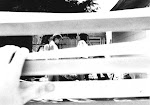
A major scene in How to See the Elephant is set at the battle of Perryville, which took place outside the small Kentucky town of the same name on October 8, 1862. Although I grew up about a hour away (country-road driving) in Lexington, and although we learned a select amount of local history in social studies classes, I learned very little about the battle, the broader campaign it was part of, or its significance to the war as a whole until I was much older. In fact, I did not visit the battlefield itself until about two years ago, well after I had decided to set part of the novel there*. I suppose the reason we didn't learn much about Perryville was because it was generally thought in those days that all important Civil War battles occured in Virginia -- or at any rate, back East. (I grew up in a subdivision whose streets were named after Civil War battles, including Cross Keys and Seven Pines, but there was no Perryville, no Franklin, no Pea Ridge among them.)
Recently historians have cycled back to the view that those Western battles were significant, but I'd be a little suprised if local schools have picked up on their proximity to the battlefield. Perryville is just a hard battle to admire. It was fought more or less by mistake by two generals who were both eventually dismissed for incompetence and who were out of touch with their troops when it was actually going on. There were 8,000 casualties from a half-day’s fighting, and it is generally conceded to be one of the goriest and fiercest battles even for the West, where the fighting tended to be more bloody than in the East. After it ended, both generals claimed victory, but both acted as if they had lost – Braxton Bragg, the Confederate general withdrew not just from the battlefield but the entire state, which he had spent two months conquering, and Don Carlos Buell, the Union general, did not bother to follow.
For those left behind, soldiers and civilians both, conditions were bad. There had been a serious drought all summer and food supplies were further reduced by soldiers living off the land. Buell had made little provision for medical care for the wounded -- his theory was "the sick take care of the sick." Worst of all, perhaps, the Union soldiers refused to bury the Confederate dead who had been left on the battlefield. After several days had passed, with conditions now unbearable, they finally rounded up townspeople from Perryville and made them do it. Altogether it's not a story that can make you extremely proud of your country. But some attention must be paid -- if for nothing else, for the men who died there.
For those left behind, soldiers and civilians both, conditions were bad. There had been a serious drought all summer and food supplies were further reduced by soldiers living off the land. Buell had made little provision for medical care for the wounded -- his theory was "the sick take care of the sick." Worst of all, perhaps, the Union soldiers refused to bury the Confederate dead who had been left on the battlefield. After several days had passed, with conditions now unbearable, they finally rounded up townspeople from Perryville and made them do it. Altogether it's not a story that can make you extremely proud of your country. But some attention must be paid -- if for nothing else, for the men who died there.
This is all by way of background for what will probably be a two-part post, the second part taking up the visit I made to the battlefield two years ago. By that time I knew all the foregoing and I looked around with eyes that might have appreciated more than when I didn't know anything.
*My sister says we did go once, when I was a baby, and I was sick. Or maybe I didn't go because I was sick. In any case, I don't remember.








No comments:
Post a Comment